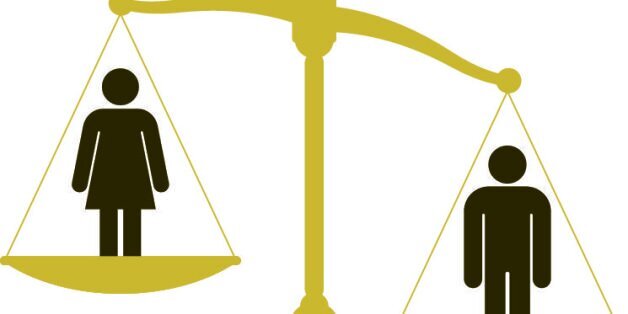
International Women's Day has been observed since the early 1900s, with the first happening in 1908 in New York City. The day celebrates the social, economic, cultural and political achievements of women and also serves as a call to action for accelerating gender parity. Depending on how far back in history we go, we can say that progress is being made -- but in the U.S., parity, for any group, is still far off.
In the U.S. women gained the right to vote when the 19th Amendment was ratified in 1920. That victory took nearly 70 years after the 14th Amendment extended protection to all citizens, defining citizens solely as white males. In 1870, the 15th Amendment passed, guaranteeing black men the right to vote. But it was not until 50 years later, through woman's suffrage advocates such as Elizabeth Cady Stanton and Susan B. Anthony that women gained the right to vote. And still today, the Equal Rights Amendment (ERA), first introduced in 1923 to give women equal status under the Constitution, remains defeated!
Women have come a long way when we look at singular accomplishments of American women across a variety of backgrounds: 1872, Victoria Woodhull, first woman to run for United States President; 1928, Amelia Earhart, first woman to fly solo across the Atlantic ocean; 1934 Lettie Pate Whitehead, The Coca-Cola Company, first American woman to serve as a director of a major corporation; 1949, Georgia Neese Clark, Treasurer of the United States; 1972, Katharine Graham, The Washington Post Company, the first female Fortune 500 CEO; 1981, Sandra Day O'Connor, first female justice of the U.S. Supreme Court; 1983, Dr. Sally K. Ride, first American woman sent into space; 1993, Janet Reno first female Attorney General of the U.S.; 1997, Madeleine Albright first woman to serve as Secretary of State; Carly Fiorina was the first woman to be CEO of a Fortune "50" company; and Janet Yellen, 2014, confirmed to lead the Federal Reserve.
These are great milestones but that's the irony -- these accomplishments illustrate we have miles to go with several stones in the way. These women may be firsts, but they are not a collective force representing an equal footing of scale to their male colleagues. Specifically, looking at the government and U.S. corporations, women's progress has been glacial! And it begs the question, why aren't there more women filling the 100 seats in the Senate and 435 in the House of Representatives today? Currently, there are only a paltry 20 (20 percent) and 84 (19.3 percent) women filling Congressional seats, respectively. From the hallowed halls in government to those in Corporate America, women are just not there in the numbers they should be. It's 2016 and only 20 women, or 4 percent of the S&P 500, are CEOs and of the Fortune 1000 board seats, just 20 percent are currently held by women.
This is why the Women's Forum of New York, founder of the International Women's Forum with over 5,000 strong, spearheads the Corporate Board Initiative, which asks CEOs to sponsor women so they can unlock the boardroom door. The candidates in the Women's Forum database are unique because CEO's have endorsed them as board ready. And to encourage parity in the boardroom by 2025, the Women's Forum hosts a biennial Breakfast of Corporate Champions to honor companies that meet the threshold of 30 percent women on their board with special recognition to those reaching parity with 40 percent women in their boardrooms. Yet less than 3 percent of the Fortune 1000 are at that threshold. As said by Ken Chenault, CEO, Chair of American Express at the November 19, 2015 Breakfast of Corporate Champions about how long it will take to reach gender parity on boards: "If you were told it would take over 50 years to achieve a business objective would you accept it"
Compared to developing countries too, the U.S. lags. In nations where you would least expect progress towards gender parity to have been made, mandates or quotas have propelled women ahead of those in the U.S. In 2015, Kenyan women held 19.8 percent of the board seats while last year in the U.S. women held 19.2 percent; (in 2016 we increased .8 percent up to 20 percent). In 2004, Malaysia's cabinet approved a policy requiring that women must comprise at least 30 percent of public sector decision-making positions. Within six years, women in the public sector held 32.2 percent of leadership positions, moving up from 18.8 percent.
In the U.S. various entities in the public and private sector continue to argue that we do not need quotas or mandates to create change. We continue to say we can self-regulate. We continue to celebrate instead of mandate. While it is great to "celebrate" women in the U.S. Congress and in Corporate America -- all faces of society continue to be under-represented in the halls and boardrooms of these institutions. The solution is to recognize, not ignore, half the population. The solution is to embrace the women who are the voters, employees, shareholders and drivers of economies by their strength and ability to influence 85 percent of the purchasing decisions. In 2016 the call to action is clear. Gender parity by 2025 must be the objective of all U.S. Congressional leaders, CEOs/Board Chairs in the corporate world, and all other sectors. We are the United States of America, the World Power, we should not be lagging; we should be leading!
This post is part of a blog series produced by The Huffington Post in conjunction with International Women's Day, celebrated on March 8, 2016. A What's Working series, the posts address solutions tied to the United Nations' theme for International Women's Day this year: "Planet 50-50 by 2030: Step It Up for Gender Equality." To view all of the posts in the series, click here.
